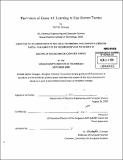| dc.contributor.advisor | Philip Tan. | en_US |
| dc.contributor.author | Dowgun, Neil M | en_US |
| dc.contributor.other | Massachusetts Institute of Technology. Dept. of Electrical Engineering and Computer Science. | en_US |
| dc.date.accessioned | 2011-02-23T15:02:40Z | |
| dc.date.available | 2011-02-23T15:02:40Z | |
| dc.date.copyright | 2009 | en_US |
| dc.date.issued | 2009 | en_US |
| dc.identifier.uri | http://hdl.handle.net/1721.1/61309 | |
| dc.description | Thesis (M. Eng.)--Massachusetts Institute of Technology, Dept. of Electrical Engineering and Computer Science, 2009. | en_US |
| dc.description | Cataloged from PDF version of thesis. | en_US |
| dc.description | Includes bibliographical references (p. 48-49). | en_US |
| dc.description.abstract | Many video games require artificial players that can act as replacements for human players. With today's constant increases in the complexity of games and the prevalence of user-created content, creating an Al that is sufficiently adaptable is becoming more challenging than ever. This thesis proposes a system which takes data from games played between humans, and from that data learns their most effective tactics. In this way, it may be possible to create an Al whose potential is limited only by the human imagination. The prototype that is described in this paper is made up of four components: a Log Interpreter and an Evaluator that process the data gathered from games played by humans; an Organizer that utilizes machine learning to glean useful information from the processed data; and a decision-making bot that uses this information while playing the game. The prototype is implemented using the Torque Game Engine and is applied to a game called TenXion, developed at the Singapore-MIT GAMBIT Game Lab. The implementation that was used for this project is merely the foundation for an efficient, robust system that can accomplish the goal of learning from human tactics. A large portion of this thesis is dedicated to the description of lessons that were learned over the course of the prototype's development and ideas for future extensions, including a map-processing module and better methods of restricting the bot to feasible strategies. | en_US |
| dc.description.statementofresponsibility | by Neil M. Dowgun. | en_US |
| dc.format.extent | 54 p. | en_US |
| dc.language.iso | eng | en_US |
| dc.publisher | Massachusetts Institute of Technology | en_US |
| dc.rights | M.I.T. theses are protected by
copyright. They may be viewed from this source for any purpose, but
reproduction or distribution in any format is prohibited without written
permission. See provided URL for inquiries about permission. | en_US |
| dc.rights.uri | http://dspace.mit.edu/handle/1721.1/7582 | en_US |
| dc.subject | Electrical Engineering and Computer Science. | en_US |
| dc.title | The future of game Al : learning to use human tactics | en_US |
| dc.title.alternative | Future of game artificial intelligence : learning to use human tactics | en_US |
| dc.type | Thesis | en_US |
| dc.description.degree | M.Eng. | en_US |
| dc.contributor.department | Massachusetts Institute of Technology. Department of Electrical Engineering and Computer Science | |
| dc.identifier.oclc | 702674769 | en_US |
